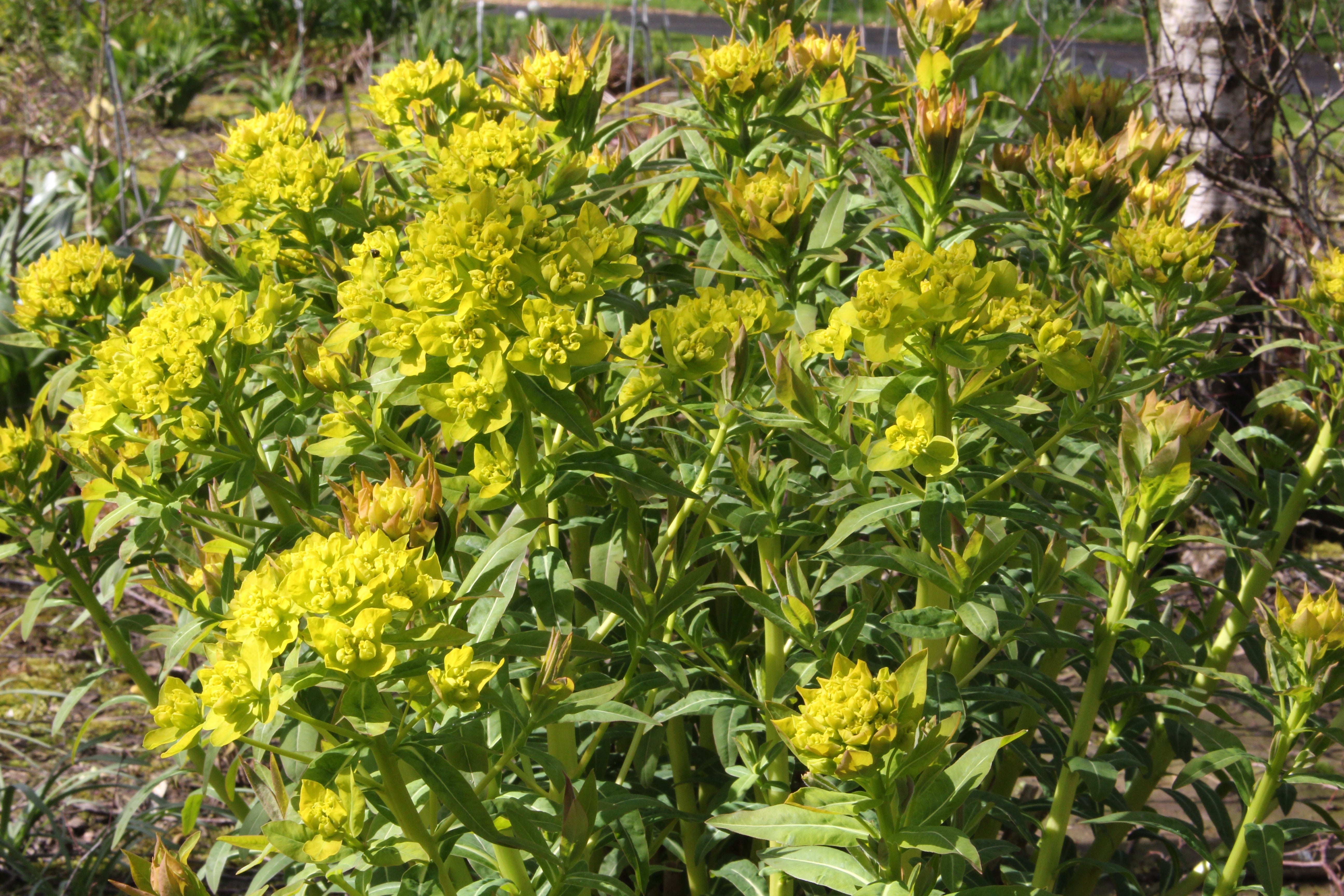Euphorbia palustris
Approx. 0.5 litre pot
About this cultivar:
Euphorbia palustris (marsh spurge or marsh euphorbia) is a native to marshland throughout much of mainland Europe and western Asia. Its narrow leaves turning red and yellow in autumn, and it has persistent, bright acid yellow flower-heads in spring.
It was published and first described by Carl Linnaeus in his book ‘Species Plantarum’ in1753.
It prefers permanently moist conditions in full sun, hence the common name "marsh spurge" and the Latin specific epithet palustris, "of marshland". It is thought to be an ideal plant for gardening because it has a different colour for almost all of the seasons. It has gained the Royal Horticultural Society's Award of Garden Merit.
- Position: Full sun, partial shade
- Soil: Almost any soil, grows well in Ballyrobert
- Flowers: May, June, July, August
- Other features: Grows well in Ballyrobert, Royal Horticultural Society Award of Garden Merit (RHS AGM)
- Hardiness: H7 - Hardy in the severest European continental climates (< -20°C), Fully hardy - grows well in Ballyrobert!
- Habit: Clump forming
- Foliage: Deciduous
- Height: 75 - 100 cm (2.5 - 3.3 ft)
- Spread: 45 - 75 cm (1.5 - 2.5 ft)
- Time to full growth: 2 to 5 years
- Plant type: Herbaceous Perennial
- Colour: Green, yellow
- Goes well with: Iris, Tulipa, Allium, Lupin and with foliage plants such as Cotinus.
About this genus:
Euphorbia (spurge) is a large and diverse genus of over 2000 (!!) species of flowering plants in the spurge family (Euphorbiaceae). The common name "spurge" derives from the Middle English/Old French espurge ("to purge"), due to the use of the plant's sap as a purgative. The botanical name Euphorbia (pronounced "u-for-be-a") derives from Euphorbos, the Greek physician of king Juba II of Numidia (52–50 BC – 23 AD), who married the daughter of Anthony and Cleopatra (imagine those in-laws!). A philosopher-king, Juba was a prolific writer on various subjects, including natural history. In 12 B.C. Juba named this plant after his doctor Euphorbos. In 1753, Botanist and taxonomist Carl Linnaeus assigned the name Euphorbia to the entire genus in the physician's honor! Phew!
Depending on the cultivar, Euphorbia grow almost anywhere that is not too extreme; we have them everywhere in our garden at Ballyrobert. In the garden Euphorbia is prized for its unique flower heads, textural foliage, and wonderful garden structure. Many new perennial Euphorbia cultivars feature leaves that vary from green to yellow to blue-green to powder blue to purple and some are even variegated or splashed with colour. The flowers attract butterflies and all sorts of creepy crawlies; truely a garden essential!
Try them with Iris, Tulipa, Allium, Lupin and with foliage plants such as Cotinus.


